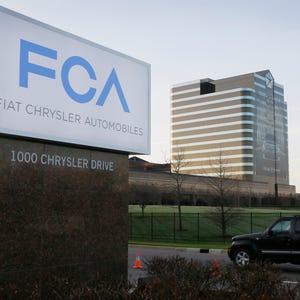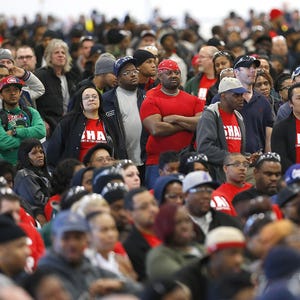Introduction and key findings
In recent decades most Americans have endured stagnant hourly pay, despite significant economy-wide income growth (Bivens and Mishel 2015). In essence, only a fraction of overall economic growth is trickling down to typical households. There is no silver bullet for ensuring ordinary Americans share in the country’s prosperity; instead, it will take a range of policies. Some should give workers more leverage in the labor market, and some should expand social insurance and public investments to boost incomes. An obvious example of the latter is helping American families cope with the high cost of child care.
The high cost of child care has received attention from an array of policymakers. For example, in his 2015 State of the Union address, President Obama cited child care affordability as a key to helping middle-class families feel more secure in a world of constant change (White House 2015). New York City Mayor Bill de Blasio recognized similar concerns and released an interagency implementation plan for free, high-quality, full-day universal prekindergarten (NYC 2014). High quality, dependable, and affordable child care for children of all ages is more important than ever, especially since having both parents in the workforce is an economic necessity for many families.
This paper uses a number of benchmarks to gauge the affordability of child care across the country. It begins by explaining how child care costs fit into EPI’s basic family budget thresholds, which measure the income families need in order to attain a modest yet adequate standard of living in 618 communities. The report then compares child care costs to state minimum wages and public college tuition. Finally, to determine how child care costs differ by location and family composition, the paper reconstructs budgets for two-parent, two-child families in 10 locations to include the higher cost of infant care, compares these families’ child care costs to those of families without infants, and compares costs for both family types with metro area median incomes.
Key findings include:
- Child care costs account for a significant portion of family budgets.
- EPI’s basic family budget threshold for a two-parent, two-child family ranges from $49,114 (Morristown, Tennessee) to $106,493 (Washington, D.C.). In the median family budget area for this family type (Des Moines, Iowa), a two-parent, two-child family needs $63,741 to attain a modest yet adequate standard of living.
- Across regions and family types, child care costs account for the greatest variability in family budgets. Monthly child care costs for a household with one child (a 4-year-old) range from $344 in rural South Carolina to $1,472 in Washington, D.C.
- As a share of total family budgets, center-based child care for single-parent families with two children (ages 4 and 8) ranges from 11.7 percent in New Orleans to 33.7 percent in Buffalo, New York.
- Among families with two children (a 4-year-old and an 8-year-old), child care costs exceed rent in 500 out of 618 family budget areas. For two-child families, child care costs range from about half as much as rent in San Francisco to nearly three times rent in Binghamton, New York.
- Child care is particularly unaffordable for minimum-wage workers.
- The high cost of child care means that a full-time, full-year minimum-wage worker with one child falls far below the family budget threshold in all 618 family budget areas—even after adjusting for higher state and city minimum wages.
- Among families with young children, child care costs constitute a large share of annual earnings for families living off one full-time, full-year minimum-wage income. For example, to meet the demands of infant care costs for a year, a minimum-wage worker in Hawaii—the state with the median state minimum wage ($7.75)—would have to devote his or her entire earnings from working full time (40 hours a week) from January until September.
- Other salient benchmarks highlight the extremely high costs of child care.
- In 33 states and the District of Columbia, infant care costs exceed the average cost of in-state college tuition at public 4-year institutions.
- In terms of child care costs’ share of total family budgets, only in a handful of EPI’s 618 family budget areas are child care costs close to the 10 percent affordability threshold established by the Department of Health and Human Services (HHS).
- Child care costs are particularly high for younger children. When 10 family budgets in various areas are reconstructed to include two-parent, two-child families with an infant and a 4-year-old (instead of a 4-year-old and an 8-year-old), child care ranges from 19.3 percent to 28.7 percent of total family budgets. This compares with a range of 11.8 percent to 21.6 percent for families with a 4-year-old and an 8-year-old.
- In these 10 areas, child care costs for an infant and a 4-year-old constitute between approximately 20 percent and 31 percent of median family income—far above the HHS’s 10 percent affordability standard.
Child care costs and EPI’s basic family budgets
Perhaps the best way to evaluate the affordability of child care is to determine the share of a family’s budget accounted for by child care costs. Toward this end, this paper relies upon EPI’s Family Budget Calculator (Gould, Cooke, and Kimball 2015), which measures the income families need in order to attain a modest yet adequate living standard where they live by estimating community-specific costs of housing, food, child care, transportation, health care, other necessities, and taxes, for 10 family types living in 618 U.S. communities.
Background on EPI’s basic family budgets
EPI’s basic family budgets differ by location, since certain costs, such as housing, vary significantly depending on where one resides. Geographical cost-of-living differences are built into the budget calculations by incorporating regional, state, or local variations in prices (depending on item). Basic family budget measurements are also adjustable by family type because expenses vary considerably depending on the number of children in a family (if any), and whether a family is headed by a single parent or two parents. The 10 family types include one or two adults with zero to four children. To estimate family costs, we assume one-child families have a 4-year-old, and that a second child is 8 years old, a third 12 years old, and a fourth 16 years old. (For more on the methodology used to construct the budgets, see Gould et al. 2015.)
The shares of expenses going to various categories vary substantially across areas and family types. Unsurprisingly, the lowest family budgets are for a single person. Except for child care (in which case families composed of two adults with no children also spend nothing), one-person families have the lowest expenses in every category. For example, they require only efficiency housing and only need to purchase other items, such as food and health care, for one. Budgets rise significantly with family size, since more children require more housing, food, health care, and child care.
What it takes to get by varies greatly across the country, as displayed in Figure A. For a two-parent, two-child family, the family budget threshold ranges from $49,114 (in Morristown, Tennessee) to $106,493 (in Washington, D.C.). In the median family budget area for this family type—Des Moines, Iowa—a two-parent, two-child family needs $63,741 to attain a modest yet adequate standard of living.
Read more by clicking on the following: High Quality Child Care Is Out of Reach for Working Families | Economic Policy Institute















